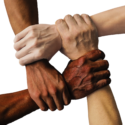Every day, each one of us is required to make hundreds of choices, and not all of them are the right ones. Heavily influenced by primary, innate biases operating on a different level from conscious, rational thought processes, the human decision-making process is inherently flawed. Within the workplace, unconscious bias is rife, as each individual’s background and personal experiences color their view of others, impacting their decisions without them even realizing it. In this article, we look at 11 different types of unconscious bias and their damaging impact on the workplace.
1. Confirmation Bias
We often search for evidence that backs up our opinions rather than trying to look at the whole picture. This leads to selective observation, causing us to focus on things that fit our agenda and overlook other important information.
We typically slip into confirmation bias in the search for evidence to validate our initial impression of a person. Sometimes, this can occur as we attempt to reinforce other unconscious biases, so it is vital to keep it in check.
- Conformity Bias
Conformity bias occurs when an individual bows to a group decision, even if it goes against their beliefs. Conformity bias suppresses independent thought and promotes self-censorship, making it the enemy of creativity.
- Affinity Bias
People tend to seek out others who are like them without even realizing it, as the unconscious mind favors individuals who are familiar and relatable rather than those who come from different backgrounds.
Affinity bias may manifest itself as an interviewer favoring a candidate who went to the same college as them or who comes from a similar background. This bias stifles diversity, ultimately impeding an organization’s creative views, approaches to work, and potential reach.
- Gender Bias
This preference for one gender over another stems from deep-seated stereotypes about gender roles. Gender bias is often related to affinity bias, with some individuals inadvertently giving people of the same gender preferential treatment.
- Ageism
A study by the AARP revealed that 60 percent of workers aged 45+ had witnessed or experienced age discrimination in the workplace. A common example of ageism is an older team member being passed up for promotion in favor of a younger colleague with less experience and seniority.
6. Hostile Attribution Bias
This type of bias is a tendency to interpret malignant intent in another person’s actions when their behavior was actually benign or neutral. If you find yourself questioning other people’s words or gestures, wondering whether they have an ulterior motive, this is hostile attribution bias.
7. Authority Bias
Authority bias occurs when group members automatically favor the opinion of the group leader over everyone else. This means that ideas from senior team members trump everyone else’s by default rather than because they are better.
8. Contrast Effect
We often use comparisons when making judgments, which can lead to flawed decisions. For example, an employee may be happy to receive a “good” in their performance review until they find out a coworker was deemed “excellent,” making them uncertain about their feedback. The contrast effect can be positive or negative, but it ultimately unfairly impinges a person’s perception of the true picture.
9. Halo Effect
The halo effect occurs when you focus solely on one impressive feature about a person, allowing it to cloud your perception of any of their shortcomings and causing you to view them in a more positive light than they deserve.
10. Horns Effect
The horns effect is the antithesis of the halo effect. Here, one negative feature about someone completely overshadows everything good about them, with a single flaw or mistake effectively canceling out all of that person’s desirable attributes in the eye of the onlooker.
11. Beauty Bias
Beauty bias refers to the positive stereotyping and favorable treatment of individuals considered more physically attractive. Hiring decisions should be based on qualifications, experience, skills, and culture fit rather than looks and physical appearance. Beauty bias can be eliminated from the recruitment process by omitting pictures from resumes, forcing hirers to focus on candidates’ experience and qualifications when screening resumes. Telephone screening can also be a useful tool to get to know applicants better without being swayed by their appearance.
Takeaway
Unconscious bias comes in a variety of different forms. In the workplace, bias leads to flawed decision-making, manifesting itself in overlooked talent, unfair and inaccurate judgments, and even discrimination.
The first step for employers is to make the unconscious conscious, encouraging discussion of workplace biases and the negative impact they can have on decision-making within an organization.
Censia is a talent intelligence and recruitment management platform that eliminates unconscious bias from the recruitment process. Recruiters gain access to a global network of top-tier professionals, allowing them to hire the right person for the job every time.






